Rachel Neumeier's Blog, page 154
October 30, 2020
BLACK DOG is free this weekend
I expect a lot of you regular commenters here already have a copy, but just in case, BLACK DOG is free today through November 3rd.
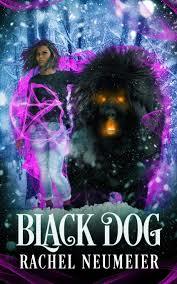
Happy Halloween!
 Photo by Dan Gold at Unsplash
Photo by Dan Gold at UnsplashPlease Feel Free to Share:








Hot Chocolate
So, here in southern MO, it’s rained … let me see … seven of the past nine days, or something like that. Cold, nasty, Novembery weather. Of course we were having a fall drought, as is not unusual, so I was very glad to have the first real rain. But the unpleasant weather got old fast, as it does. I don’t like coffee or tea or soda or fruit juice, but cold, rainy days sometimes make me think of hot chocolate, a temptation to which I’m happy to yield.
I don’t like hot chocolate that you can barely tell contains chocolate, and as far as that goes I’m not crazy about any thin hot chocolate. I prefer hot chocolate with luxurious body to it. The kind of thing that makes you think of trying to stand a spoon up in it, although you can’t actually do it.
As it happens, I have right here a cookbook which is not exactly a cookbook, Simple Cooking by John Thorne, published in … hmm, looks like 1980. It’s a collection of delightful essays about food, the sort of thing where the author considers one recipe and provides half a dozen variants of that recipe. Also a section that is a kitchen diary. I enjoy books like this. I’ve got an older hardcover edition, but I’ve linked the more recent Kindle edition. I would never buy a cookbook as an ebook, but for a cookbook that is primarily essays and has no pictures, maybe I would break that rule, and so might you, so that’s why I linked that version.
Anyway – you can probably see this coming – the very first essay Thorne presents in this book happens to be about hot chocolate. One of the recipes yielded the superior mug of hot chocolate I just finished drinking a few minutes ago. I will now pass that recipe along to you all. It’s probably standard in France, as it’s called French Hot Chocolate. I will provide a recipe suitable for precisely one person. No doubt it multiplies easily.
French Hot Chocolate
1 C milk
1.5 oz decent chocolate (I used Ghirardelli bittersweet chocolate chips)
1 egg yolk
Heat ¼ C of the milk gently with the chocolate until the chocolate is melted. Slowly whisk in the rest of the milk. Beat the egg yolk in a separate bowl. When the hot chocolate is hot and steaming, stir a few tsp into the beaten egg, then pour the egg into the rest of the hot chocolate, whisking briskly to combine and then, if you like, even more briskly until frothy.
There you go. This is, obviously, the same technique one uses to make custards and puddings and lemon curd and whatever else is thickened with egg yolks. Obviously in this case the technique produces delightfully thickened hot chocolate. I doubt I’ll ever make hot chocolate any other way now that I’ve tried this. Thorne declares quite firmly that there is no better breakfast than this kind of hot chocolate with a croissant. I find that easy to believe. The next awful, nasty, rainy, cold day – or pretty snowy day – you get, I suggest you try this kind of hot chocolate and see what you think.
To dispose of the unwanted egg white, well, I suppose an egg white omelet or something would also be a fine addition to breakfast, but personally, I just cooked the white and divided it among the dogs, who were feeling left out – they told me plainly – because they did not get to try the hot chocolate.
For those of you interested in Simple Cooking, I’ll add that Thorne also provides six other recipes for hot chocolate. Other chapters include, let me see, corn cakes, macaroni and cheese, bread and olives, stuffed grape leaves, potato soup, succotash, cheesecake … as you can see, a wide assortment. Also the long kitchen diary section and chapters called things like “In Defense of Picnics” and “Truly Awful Recipes.” This is truly a delightful book, highly recommended if you like books that fall into the intersection between cooking and reading.
Please Feel Free to Share:








Best headline of the year?
That cannot possibly be as great an article as this headline makes it seem. There is no way.
Hundreds of the duplicating crustaceans, which can dig down to up to a metre and are always female, pose a deadly threat to local biodiversity after colonising a historic Antwerp graveyard.…
“Duplicating” is a ridiculous word for reproducing. I guess they must be parthenogenic? Reproducing parthenogenically is not quite the same thing as cloning. The meiotic process introduces some genetic variation.
Are crayfish — in certain areas, you may know them as crawdads — are they often parthenogenic? Or is that just these special cloned mutant crayfish?
Ah! No, it’s just this kind, which is called the marbled crayfish . This is not exactly a species — it was “discovered in the pet trade” and is not known from any wild populations. ??? That’s what it says! On Wikipedia, so it must be true. “Information provided by one of the original pet traders as to where the marbled crayfish originated was deemed “totally confusing and unreliable.”
How interesting! So this strange parthenogenic crayfish turned up in the pet trade and has now — of course — been released into all sorts of streams where it is thriving. I don’t at once see anything about other parthenogenic decapod crustaceans, just poking around on Google. A quite different crustacean, the water flea, Daphnia similoides, alternates parthenogenic and sexual generations. So, once you get outside the crustaceans, does the common aphid, which is why aphid populations can explode so fast in your garden. So this is not unknown in arthropods more broadly.
Well, I would say that it sounds like the marbled crayfish is here to stay, and likely to be very successful in all sorts of freshwater streams. The linked article says, “It is particularly prevalent in Madagascar where its rapid spread in less than a decade is because of its popularity as a cheap source of protein. Researchers have found that the marbled crayfish could out-compete seven native crayfish.”
I bet. If at some point someone really wants to get rid of them, I expect the way to do it would be to find a disease or parasite that attacks them. A population like this probably does not have the genetic variability to evolve resistance, while crayfish that reproduce sexually are more likely to have that kind of genetic variability.
Anyway: fantastic headline. If anyone has a headline that comes anywhere close to that neat, drop it in the comments so we can all admire it!
Please Feel Free to Share:








October 29, 2020
Mathematical SF novels
From Book Riot: A GUIDE TO CONQUERING YOUR DEMONS WITH 5 MATHEMATICAL SCI-FI BOOKS
I, of course, am not at all nervous about normal math, which I define as arithmetic and algebra. You hand me a polynomial and I can factor that sucker, though if I have to find rational zeros to get started, I will be peeved. (I admit I don’t recall anything about trig except it has to do with triangles, and very little about calculus except that derivatives have to do with finding the rates at which things change.)
Anyway, sure, I will probably like math in SF, unless it just seems stupid, like the magic wand math in the TV show “NUMB3RS.” Alas, that is most often the case for math in SF.
Let me see which books Book Riot points to here …
Gosh, I haven’t read any of these. Plus the post is perhaps cheating by pointing to two books by the same author — Middlegame and Imaginary Numbers, both by Seanan McGuire. Perhaps that isn’t cheating, as I see the two books belong to different series. The latter is an InCryptid novel, not a series I liked at all when I tried it. The former looks like horror:
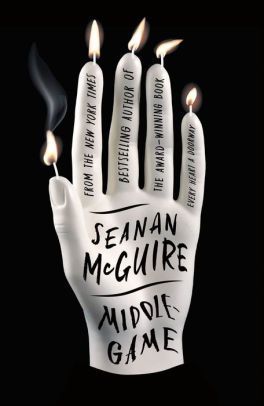
Doesn’t that look like horror? And while the end of October is a good time to read horror or dark fantasy, I have a book or two of that description I was already planning to read.
Anyway, it’s surprising to me that Book Riot would pick out five SF novels in which math is important and I wouldn’t have read any of them. Maybe I will try Middlegame after all.
Please Feel Free to Share:








Recent Reading: Sea of Rust by C Robert Cargill
Okay, Sea of Rust has been on my (paper) TBR shelves for a while … let me see … a relatively short three years, looks like, assuming I picked it up the year it came out, which I think I did. I believe it was among the free books I picked up at a World Fantasy Convention or WorldCon.
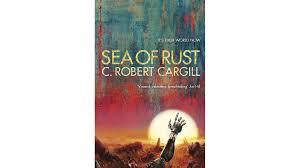
So, here’s part of the description:
It’s been thirty years since the apocalypse, and fifteen years since the murder of the last human being at the hands of robots. Humankind is extinct. … Most of the world is controlled by an OWI – One World Intelligence – the shared consciousness of millions of robots, uploaded into one huge mainframe brain. But not all robots are willing to cede their individuality for the sake of a greater, stronger, higher, power. … One of these resisters is Brittle, a scavenger robot trying to keep a deteriorating mind and body functional in a world that has lost all meaning.
Grim! No wonder it took me several years to get to it, especially since lots and lots of books sit on the shelves a lot longer than that. It’s getting close to the end of the year and I’ve hardly read anything from the physical TBR shelves this year, so I picked this one up almost at random. And I have to say …
… It’s really good! SEA OF RUST is a fast-paced, compelling, high-stakes, page-turner of a postapocalyptic novel. I’m going to pass it over to my dad at once, as he will probably love it.
Humanity really is gone. Along with practically the entire biosphere. Turns out robots don’t necessarily feel very bothered by causing a REAL mass extinction, one that probably rivals the K-T extinction. Cargill presents a scenario for the robot apocalypse that seems terrifyingly plausible while you’re reading the story. Actually, that scenario has several layers, as Brittle, and thus the reader, finds out what really happened thirty years ago and what is really happening now. All the layers feel terrifyingly plausible.
I thought I would have way too much trouble with a story where humans have been wiped out and all the characters are robots – I thought that would bother me – but actually, no. This is because almost at once I said to myself, in exactly so many words, “These are robots like ART in Murderbot; they’re really and truly people.” That flipped a circuit somewhere in my reader-brain and let me tolerate the backstory and enjoy the protagonist and secondary characters. Also, in a kind of cosmic justice, the robots who inherited the world are in deep, deep trouble. That also makes it easier to tolerate the backstory.
More remarkably, I continued to enjoy the protagonist even after I realized Brittle is a terrible person. Her personal backstory is terrible and her current occupation is terrible and really, no, she is awful. I liked her anyway, partly because wow, is her situation ever terrible, so I had to sympathize with someone trying that hard to survive; and partly because the author keeps ratcheting up the action and it was impossible to stop and dwell on the inherent unlikability of the protagonist; but partly I kept stubbornly liking Brittle because I felt there were just enough hints that maybe Brittle’s character arc was going to (somehow) slant upward.
Spoiler: I hope you won’t mind if I just say right out that yes, actually, it did. At the end, Brittle makes a different kind of choice, and also the world wind up in a better place, with a lot more hope for the future than the grim (really grim) past implies.
Brittle is a great protagonist in a bunch of ways. Let’s say this novel is a good choice if you like unreliable narrators. Plus Cargill does a good job with the secondary characters, especially Mercer. This is the most important secondary character. Mercer starts off looking like a simple bad guy – we meet him when he ambushes Brittle and tries to kill her so he can scavenge her parts – and then Cargill pulls of this trick whereby the reader gradually realizes that by most measures Mercer is actually a better person than Brittle. This is handled with amazing deftness. Then the two of them continue to play off each other in ways that I really can’t explain because that would be a spoiler, but anyway, the story winds up being quite satisfying.
So, who should read this book? Well, if you like Murderbot, you might try this one, with the understanding that Murderbot itself is a MUCH nicer person than Brittle, and that the world of Murderbot, while awful in many ways, is not NEARLY as grim as the world of SEA OF RUST.
If you’re looking for something low-stakes and warm and fuzzy, ha ha ha, no.
If you think you might like a tense page-turner where the author really demonstrates how to keep a nonstop pace going straight through an entire novel, then yes, absolutely.
Also, after SEA OF RUST, nothing about 2020 can possibly seem all that dire. Look around – biosphere still intact? People not extinct, along with a huge proportion of all other organisms? Well, then, things could certainly be worse. SEA OF RUST will paint a very, very clear picture of exactly how much worse it could be and how it could have gotten that way. I may not want to read another book with this kind of grim setting this year, but seriously, I enjoyed this book a whole lot and I highly recommend it.
Please Feel Free to Share:








October 28, 2020
Copper Mountain
Just a head’s up —
I’m heading over to KDP to hit “Publish” for Copper Mountain right now. This book should be available tomorrow, or Oct 31st or at the very latest, November 1st.
I hope you enjoy it!
Those of you who provided editorial comments, THANK YOU — you made me do a lot of extra clean-up work, resulting in a dramatically better book.
Those of you who read for typos, THANK YOU — you improved the reading experience dramatically for all readers. I believe the mean number of unique errors caught per reader was fifteen point something. I don’t know how many errors you caught altogether, but a lot.
Here, by the way, is the cover:
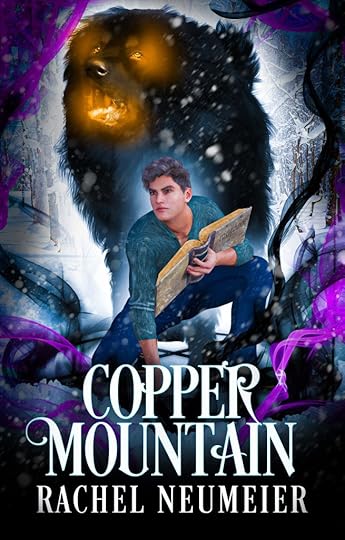
Please Feel Free to Share:








Getting the science right
Here’s a post at Crime Reads that is certainly broadly applicable outside of mysteries and thrillers: WHY USING ACCURATE SCIENCE IN YOUR FICTION IS SO IMPORTANT
There’s a picture at the wolverine at the top of the post. This instantly made me think of the urban fantasy I read (ages ago, don’t remember much about it) where the protagonist turned herself into a mink and wound up having knock-down-drag-out fight with a rat, and I threw the book across the room (possibly literally, I don’t remember that either). A mink is not going to enter gladatorial combat with a rat. It will kill the rat and have dinner. From the physical description, it was perfectly clear that the author meant not “mink” but “ermine” or “white phase short-tailed weasel.” A short-tailed weasel weighs about 7 ounces, a bit smaller than a standard Norwegian rat, and therefore chooses smaller prey than rats. A mink weighs around 2 lbs and has no trouble killing rats. The author’s agent, first reader, editor, copy editor, or SOMEONE should have said, “Uh, you are not describing a mink.”
And that is what I thought of the second I saw a picture of a wolverine at the top of this post. I said to myself, Gosh, I hope the author of this post is planning to talk about wolverines, not ermine. Now, to actually read the post.
You can create a plot with explosions, acrobatic assassins that speak twelve languages, lost civilizations, hidden treasures, and ancient tomes, and the audience will drink it in. But make a factual error, like that Plato wrote those ancient tomes in Italian, and the reader can grind to a halt and be taken right out of the narrative.
So true! Except I would pass over that particular error with a puzzled, Uh, Italian? and go on, probably. Book-throwing requires something that hits me closer to home.
I vividly remember my first experience with this. I was happily reading a thriller that described how bubbles of air from Earth’s ancient atmosphere can get trapped in ice. Scientists then extract ice cores and can analyze those bubbles. “True, true,” I nodded, fascinated…. I felt charged up as the novel progressed, as the scientist characters leaned over their own ice core, taking samples. And then boom, there it was—the author stated that the ice being sampled by these scientists was 350 million years old. I lowered the book. The oldest ice on earth is around two million years.
The author of this post, as you may imagine, declares that she prefers to get details right when she puts her own novels together. Here’s her comment about her recent book:
[M]y upcoming thriller, A Solitude of Wolverines … features a wildlife biologist who lands a gig studying wolverines on a remote sanctuary in Montana. I didn’t want a wolverine researcher to pick up my book and end up scoffing at inaccuracies …
Indeed, wolverines! Very good! Also, sure, I’m personally interested. I like the sound of this protagonist. Depending on how the book looks, I could well want to try at least a sample. … Hmm. Sounds like it could be good.
I will just mention, though, before going on, that the author of this post declares that wolverines are seriously endangered in the contiguous US, with a population in the low hundreds. While this is true, and overall, wolverines are indeed considered somewhat endangered, the population numbers for wolverines in the Lower 48 are completely irrelevant. There are thought to be about 20,000 in Canada and Alaska. I really do not like to see people deliberately exaggerate the endangered status of random species to make a rhetorical point, which I think the author has done.
Further, the author of this post says “paternal behavior in carnivores is incredibly rare” which is basically not true. Of course the veracity of this statement depends on your definition of “incredibly.” Paternal behavior is seen in all or nearly all canid species. That’s, oh, about 30 species of canids to start with. We also see paternal behavior in many social viverrids. There are about 250 species of carnivores. I suppose probably under 15% show paternal behavior, call it between 10% and 15% as a fairly reasonable estimate. Isn’t ten percent more like “somewhat uncommon” than it is “incredibly” rare?
Just saying. I wouldn’t call that an inaccuracy of fact, but it’s a bit … what’s the term? … misleading by means of overwrought language? Would that be fair? I am less likely to try a novel if I feel the author is prone to exaggerated language.
Moving on, I will add, one of the (relatively rare) times I really wanted to get details right was when I wanted Miguel to make a car explode by shooting it in Shadow Twin. As you may recall, that didn’t happen, and the reason it didn’t happen — you can see this coming — is because I couldn’t figure out a way to make a normal car explode by shooting it with a normal gun.
It turns out that if you complain about this sort of thing on Facebook, a surprising number of people will at once tell you how to make a (prepared) car explode when you shoot it with a (special) gun. This is not, alas, helpful, if the car and gun must both be normal, so as you know, I did something else in that scene.
Let me see … okay, I also spent quite a bit of time looking up how to cook beaver tail and what that is like to eat for a scene in Tuyo. No, that detail didn’t make it into the book either, don’t bother trying to recall a moment when that was relevant.
The only time I remember doing a lot of research and actually using some of that research was for Tehre in Land of Burning Sands. Nearly every word that came out of her mouth was based on something from Structures: Or Why Things Don’t Fall Down, by JE Gordan, a wonderfully readable book about materials science. That book lived on my coffee table, in easy reach of my laptop, for the whole time I was writing Sands. I hope, that on the no-doubt rare occasion that a real materials scientist reads the Griffin Mage trilogy, he or she is happy to see accurate comments about architraves versus arches and so on.
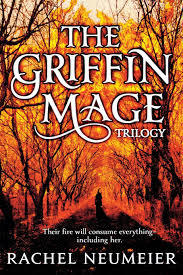
Please Feel Free to Share:








Alas!
So, Lynn picked a different book as her finalist for the SPFBO. Here’s her review for her finalist, Voice of War.
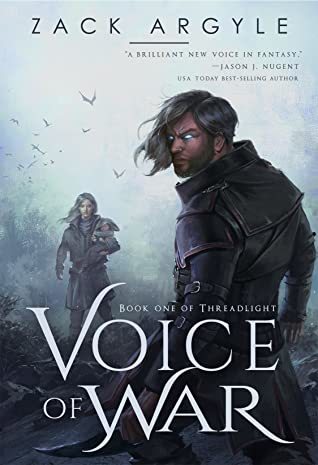
From Amazon:
While preparing for the birth of his first child, Chrys Valerian is tasked with uncovering the group responsible for a series of missing threadweavers—those able to see and manipulate threadlight. With each failure, the dark voice in his head that began during the war grows louder, begging to be released.
A young girl from a secret city in the center of the Fairenwild, veers off course to explore the streets of Alchea. She never expected that her journey would end in chains.
Far in the deserts to the south, a young man’s life changes after he dies.
When Chrys learns who is responsible for the missing threadweavers, they come for him and his family. He must do everything in his power to protect those he loves, even if it means trusting strangers or, worse, the dark voice in his mind.
Please Feel Free to Share:








October 27, 2020
Recent Reading: The Adventures of Rocío Díaz Rossi and Hala Haddad Sosa, by R. Morgan
Okay, I didn’t realize I was in the mood for a police procedural set in one of the snazziest fantasy settings ever, but turns out I was, so I’m glad the author sent me a review copy of this book.
So first, let me place Adventures in the fantasy genre: it is indeed very much a police procedural murder mystery and a buddy-cop story. It stands alone, pretty much, but it’s got BIG hooks for a sequel, perhaps unsurprisingly, as police procedurals are by their nature suited to a series format.
The protagonist is Rocío. Despite the title, Rocío is the only pov protagonist. She’s forty-something, established in her career, a detective with the Miraflores Community Justice Center in the city of La Beneficia de nuestros vecinos y los seres celestiales (generally referred to as La Bene).
The worldbuilding: Here I want to pause and tell you a lot about the worldbuilding, which is way up there for baroque, fun, complicated, delightful, non-European settings. Morgan handled this setting in the way I like best, layering in a million details that build up the world and give it a sense of deep history without ever pausing to explain the history or geography or much of anything; the reader picks up the most important elements as they go along. I loved it, seriously, but I have to add, for almost the only time in my entire reading life, I wouldn’t have minded pausing for an extended history lesson. Not up front, I maintain my utter dislike of prologue-as-history-textbook, but if someone had paused about eight chapters into the action to say, “So, as you know, Rocío, a thousand years ago the Ya Empire stretched from point A to point B – here is a map to jog your memory – and then the Ka Empire yada yada yada,” I would not actually have objected to that. To put it more seriously, this is a story that would benefit from either a) a glossary in the back, with extensive historical notes; or b) a link to a website where the author details the history of the world, plus maps.
This is one story where I’m pretty darn sure the author must have a World Bible sitting around somewhere. It’d be great to get a peek at that, is what I’m saying.
So, the city of La Bene is a port city in South America somewhere. Someone more familiar with South American geography might have a better idea where exactly the city is placed, but the city is plainly a crossroads for many and varied cultures and cultural traditions. Technology is shifting from gaslamp toward industrial, with horse-drawn trolleys plus a very few alarming-sounding automobiles. The weather, climate, food, plants, and animals are all drawn so as to give a clear sense of place – I’m pretty sure this is the first fantasy novel I’ve ever read where a coati makes a brief appearance. Also, there are a few dogs that appear briefly, including Papillons, which of course made me happy. Let me pause and add a picture of my first dog here, just because:

So, pulling myself away from thoughts of how delightful Papillons are, the actual take-home message here is: it’s hard to express how much I loved the details of the worldbuilding. The author cleverly layers tons of delightful details into witty dialogue, like this:
“Ugh. Do you have something for me?” [Rocío asks a forensic tech.]
“Not yet. Hala gave me the dust she found in Aleksandr Prokofiev’s room. I’m running five simultaneous tests: the omni-essence test, the copper test, the hocus pocus test—”
“Yaco, stop. I only know what the hocus pocus test is, and that’s because it’s not its real name.”
“Oh, right. It’s the Bernabé-Caswallawn-Fumagalli-Quiroga test.”
Who wouldn’t love that? The hocus pocus test, like all the other forensic tests, is a test for magical essence or something, because yes, all kinds of magic is layered into this setting. In this world, magic is powerfully influenced by geography, a bit like magic in the Griffin Mage trilogy. Ghosts and talking to dead ancestors here, electrical magic there, making nasty little fae-mosquitos somewhere else …
So, I could spend all day pulling out one delightful worldbuilding detail after another, but hopefully the above is enough to give you all the idea. How about other aspects of the story?
The characters: Rocío is from a posh family, rejected their expectations, got involved in the theater, and is now a detective. Hala, her partner, is a bit Holmesian, with a tendency to pull subtle details about crime scenes out of thin air and random useful objects out of her pockets. Their direct boss is competent, their ultimate superior a complete idiot, the young woman they are training earnest and well-intentioned, and so on.
I would say that most of the characters are pretty one-dimensional, drawn in with broad strokes. This may be something of an asset in a story where the world is so complex and unfamiliar. Simple characters give the reader a resting place when otherwise the story might seem overly opaque and hard to get into.
Rocío has been given layers, but even here these are simple layers. For example, her relationship with her family, especially her mother, is toxic. I imagine the author plans to sort out this subplot in a later book, which is fine, but because Rocío has very little self-understanding in this regard, she sometimes reads more like she is in her twenties rather than her forties. In fact, there are several reasons that Rocío reads more like a younger woman than a mature woman, but that’s a big one.
The plot: This is fundamentally a simple mystery. This too makes the story easy to get into and follow, regardless of the unfamiliar details of the world. Plot twists do not come from the actual plot. When the bad guy is revealed, I more than half expected that to be a red herring, but nope, that’s the bad guy. In this story, plot twists arise not from the murder mystery elements, but from the worldbuilding elements; eg, magic can get pretty powerful and pretty scary.
Who would like this book: Well, that’s a complicated question, because there aren’t a whole lot of books that seem all that similar to this one, even though there are tons of books that share one or another important element. Let me see. All right:
If you like Liz Williams’ Inspector Chen novels, you should take a look at this one. That is the single series that strikes me as most similar, even though of course every single detail is different. Williams has a more elegant overall writing style, while Morgan offers a much (much) faster pace.
If worldbuilding is something you particularly like, then this story makes me think of Andrea K Höst’s Pyramids of London and Kate Elliot’s Spiritwalker trilogy. Like those, Adventures is wonderfully baroque and offers a sense of deep history behind a complicated world that may share limited details with our world, but takes those details off in a very, very different direction.
Overall: I haven’t been reading all that many new-to-me books lately. I’ve been more re-reading this whole year, and mostly focusing on low-tension novels when I do read something new. When I’ve tried to start something new, especially SFF, often I haven’t been able to get into the story. If I do an end-of-the-year retrospective post about my favorite books I’ve read this year, it’ll be a short post.
Adventures hooked my interest with the delightful worldbuilding and then got me engaged with the fast-paced story and the likeable characters. Also, this story is in fact fairly low tension. In a mystery or a police procedural, we expect the bad guy to be caught and justice to prevail and that’s certainly what I expected here. I don’t want to spoil things, but I was also pretty certain that various important plot elements would work out well at the end, and they do.
As you can tell, I liked Adventures a lot. I’m not sure when it’s actually due to come out — spring 2021 sometime — but if police procedural fantasy and/or great worldbuilding is something you like, you should certainly keep an eye out for it.
Please Feel Free to Share:








October 26, 2020
SPFBO review of TUYO
So, a week or two ago I mentioned that Lynn, of Lynn’s Book Blog, had picked out TUYO as one of ten books to consider as semifinalists for the SPFBO.
Her review for TUYO went up this morning, the last of the ten to be reviewed. I’m happy to say it’s a thoroughly positive review.
As the story begins to unfold and Ryo and Aras learn more of each other’s customs it becomes apparent that a third party is actually a bigger risk to the Lau and the Ugaro and in order to survive the two may have to overcome their mutual distrust.
To be honest that last part encapsulates so much of what makes this book a good read. The Ugaro and the Lau are so very different and the author does a really good job of getting across the culture and lifestyles of both. It’s these very differences of course that cause fear and distrust and this is a winning element of the story – watching the gradual change as both characters learn more about each other’s way of life.…
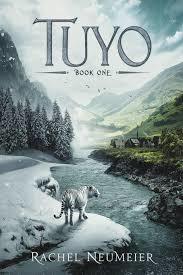
Lynn will start narrowing the ten to real semifinalists later this week and then pick one finalist.
Some of the other bloggers have picked out their one finalist already, others are still narrowing down their list. Let me see … okay, here is Mark Lawrence’s continually updated post showing who’s picking which semifinalist and finalist. That’s very helpful.
Fantasy Faction has picked out four semifinalists, including Patrick Samphire’s Shadow of a Dead God.
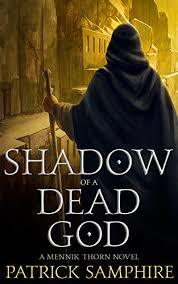
Fantasy Faction narrowed their choices down and then chose a book that sounds more SF than fantasy (but does sound promising: The Combat Codes.
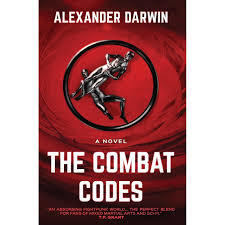
RockStarlit BookAsylum finally chose Black Stone Heart as their finalist.
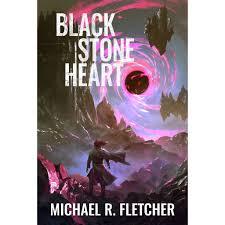
Book Nest picked out The Lost War
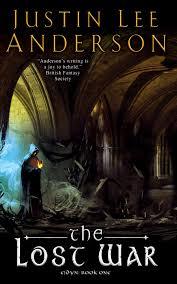
The Weatherwax Report narrowed their choices to four semifinalists and finally chose a book called Last Memoria.
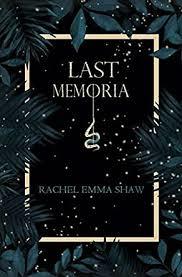
Looks like about half the bloggers are still sorting out their finalists … I bet a lot of decisions will get made this week. Wish TUYO luck!
Please Feel Free to Share:











